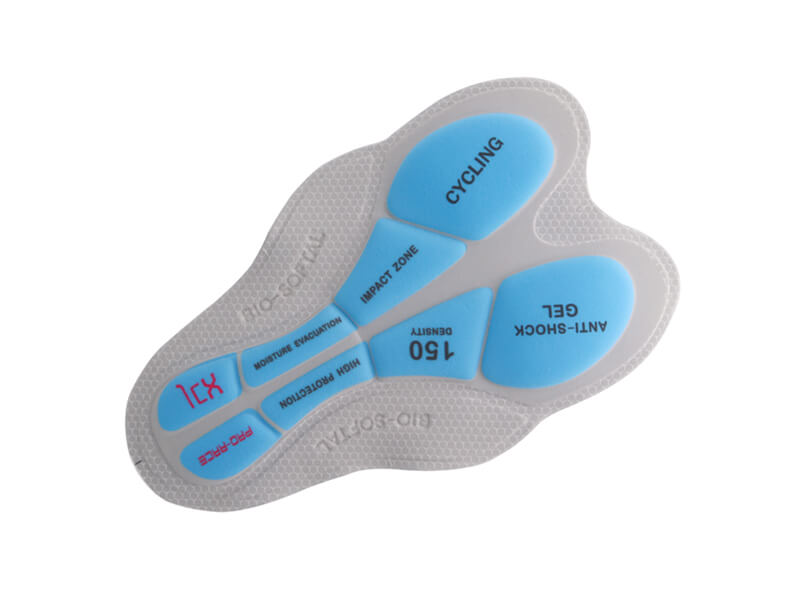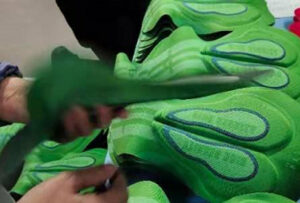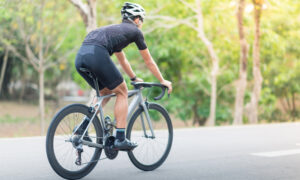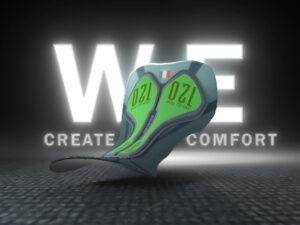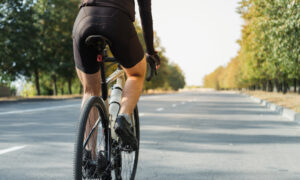Cycling transcends mere exercise or transportation—it’s a passion and lifestyle embraced by millions around the globe. One pivotal aspect often dictating the joy and endurance of a ride is the choice of cycling pads. Among the myriad of options available, chamois cycling pads have been a traditional favorite. But as technology evolves and new materials emerge, cyclists are faced with a crucial question: chamois or no chamois?
Introduction to Cycling Comfort
The choice of a cycling pad can dramatically affect your comfort, performance, and overall enjoyment of cycling. This section will delve into why Chamois has been a go-to choice and what pivotal role comfort plays in selecting the right cycling pad.
Understanding Chamois Pads
Chamois pads, originally made from the soft, supple leather of the chamois goat, have long been integral to cycling shorts. They serve the dual purpose of cushioning and reducing friction between the cyclist’s body and the saddle. Today’s chamois pads have evolved into high-tech engineered fabrics designed to provide maximum comfort and moisture control. These pads are often embedded within the lining of cycling shorts and are crucial for long-distance rides where comfort is paramount.
Importance of Comfort in Cycling
Comfort is not merely about feeling good on the bike; it’s crucial for avoiding injuries and prolonging riding endurance. An uncomfortable saddle can lead to saddle sores, chafing, and even more severe long-term health issues. Therefore, the pad’s material, thickness, and placement are essential considerations that can make or break a cyclist’s experience. Whether embarking on a casual ride through the city or a challenging mountain trek, the right padding is essential to ensure that discomfort doesn’t cut the journey short.
History and Evolution of Cycling Pads
To appreciate the current debates around cycling pads, it’s important to understand their evolution—from simple leather patches to sophisticated, scientifically designed systems that enhance rider comfort and performance.
The Origins of Chamois
The use of chamois leather in cycling began as a practical solution to the harsh discomfort of wooden and early metal bike seats. The leather was favored for its absorbent qualities and ability to soften the ride. As cycling grew in popularity, the demand for a more comfortable, durable solution led to the development of modern synthetic chamois, which retains the beneficial properties of the original but with added benefits such as antimicrobial treatments and improved elasticity.
Technological Advancements
Advancements in textile technology have dramatically transformed cycling pads. Modern chamois are often made from advanced synthetic materials that are engineered for optimal moisture-wicking, quick-drying properties, and enhanced breathability. These features are critical in reducing the risk of saddle sores and bacterial growth, ensuring that cyclists remain comfortable and healthy, regardless of the ride’s duration or intensity.
Current Trends
The cycling community today is split between traditionalists who swear by the proven effectiveness of chamois and innovators who experiment with newer materials like gel inserts and various foam compositions. These alternatives promise reduced weight, better heat dissipation, and tailored support that adjusts dynamically during a ride. As a result, the choice of cycling pads has become a reflection of personal preference and the specific needs dictated by the cyclist’s style and environmental conditions.
Chamois: The Pros
Understanding the benefits of chamois pads is essential for any cyclist considering whether to stick with tradition or explore newer alternatives.
Enhanced Comfort
The primary advantage of a chamois pad is the enhanced comfort it offers. By providing a cushioned barrier between the cyclist and the saddle, chamois pads absorb vibrations and impacts from the road, which is particularly beneficial during long rides on uneven surfaces.
Prevention of Chafing
Chafing and skin irritation are common issues for cyclists, particularly on longer rides. A well-designed chamois pad reduces friction and movement between the body and the seat, minimizing the risk of skin abrasions and discomfort.
Moisture Management
Effective moisture management is vital for any endurance athlete. Chamois pads are designed to wick away sweat from the skin, helping to keep the rider dry and comfortable. This function is crucial for maintaining skin health and preventing the growth of bacteria that can lead to saddle sores.
The benefits of chamois pads are substantial, but they have their drawbacks. In the following sections, we will explore the cons of chamois pads and the alternatives available on the market, providing a balanced view to help cyclists make the best choice for their individual needs.
Chamois: The Cons
While chamois pads are favored by many for their comfort and protective properties, they come with certain drawbacks that can be significant, depending on the rider’s specific needs and preferences.
Potential for Overheating
One of the lesser-known but impactful drawbacks of chamois pads is their potential to contribute to overheating. The same properties that provide cushion and moisture absorption can also reduce breathability, particularly on hot days or during intense rides. This can lead to discomfort and an increased risk of heat-related skin issues.
Maintenance and Care
Chamois pads require careful maintenance to preserve their functional qualities and hygiene. They need to be washed after every use to prevent the buildup of bacteria, which can degrade the material and cause health problems. Additionally, the washing process must be gentle, often requiring special detergents and avoiding fabric softeners, which can break down the integrity of the pad.
Cost Considerations
High-quality chamois pads can be expensive. The cost is justified by the technology and materials used, but it can be a barrier for new cyclists or those on a tight budget. Moreover, since chamois wear out over time, they need to be replaced periodically, adding to the long-term costs of cycling gear.
Alternatives to Chamois
With advancements in cycling gear, several alternatives to chamois pads have become popular among cyclists who seek different benefits or have had issues with traditional chamois.
Gel Pads
Gel pads are one of the more popular alternatives to chamois. They offer superior shock absorption and are often preferred for their ability to conform to the body, providing targeted comfort without the bulk of traditional foam or chamois pads. However, they can be heavier and might offer a different level of moisture management than chamois.
Foam Options
Foam pads are another alternative, available in various densities and thicknesses to suit different types of cycling. They tend to be lighter than gel pads and can offer good moisture management, but the level of comfort and durability can vary significantly based on the quality of the foam.
Innovative Non-Chamois Materials
Some manufacturers are experimenting with completely new materials that aim to combine the best properties of chamois, gel, and foam. These materials may include advanced synthetics that are highly breathable, offer excellent moisture-wicking properties, and come with built-in antimicrobial technologies to reduce the risk of skin infections.
Choosing the Right Pad for Your Cycling Needs
When it comes to selecting the right cycling pad, the wide array of options available can be overwhelming. Here are some factors to consider and a comparison of the different types to help you make an informed decision.
Factors to Consider
- Type of Cycling: The choice of pad should vary depending on whether you engage in road cycling, mountain biking, or casual rides. Each style demands different levels of cushioning and support.
- Personal Comfort Preferences: Some riders prefer the firm support of foam, while others might find gel pads more comfortable for long distances.
- Climate Conditions: In hot and humid climates, breathable materials that wick moisture effectively are crucial.
Comparison of Different Types
- Chamois: Best for high-intensity and long-distance riding where durability and moisture management are crucial.
- Gel Pads: Ideal for riders who need maximum shock absorption and are less concerned with weight.
- Foam Pads: Suitable for a wide range of activities, offering a good balance between comfort and breathability.
- Innovative Materials: Often the choice for those seeking the latest technology in cycling comfort, combining the benefits of traditional materials with enhanced properties.
Recommendations by Cycling Style
- Road Cyclists: Often prefer chamois for its proven track record in providing comfort on long rides.
- Mountain Bikers: May opt for gel pads due to their better shock absorption on rough terrain.
- Casual Riders: Might benefit from foam pads or innovative materials that offer sufficient comfort without the professional-grade price tag.
Choosing the right cycling pad involves balancing various factors, including comfort, cost, maintenance, and the specific demands of your cycling activities. By considering these aspects and comparing the available options, cyclists can enhance their riding experience, ensuring comfort and performance are optimized for every journey.
Expert Opinions and Cyclist Testimonials
The decision between chamois and alternative padding is not just about personal preference. Insights from industry experts and testimonials from fellow cyclists provide invaluable perspectives that can guide this choice.
Insights from Industry Experts
Experts in cycling gear often emphasize the importance of selecting the right padding based on individual needs rather than general trends. They point out that while chamois pads have a long-standing reputation for reliability, new materials are continually being tested to enhance comfort and performance. Innovations such as enhanced breathability and antimicrobial treatments are making these alternatives increasingly competitive.
Real Cyclist Experiences
Testimonials from cyclists vary widely, reflecting the diversity of experiences and preferences within the community. Some seasoned long-distance riders swear by their traditional chamois pads for unparalleled comfort on lengthy rides. In contrast, others advocate for the benefits of gel or foam in reducing fatigue and providing tailored support. These first-hand accounts can offer real-world insights into how different materials perform under various conditions.
10 Tips for Using and Maintaining Your Cycling Pad
Proper use and maintenance of your cycling pad can significantly enhance its longevity and effectiveness. Here are ten practical tips to help you get the most out of whichever type you choose:
Correct Fit
Ensure that your cycling shorts fit well. A poorly fitted pad can negate the benefits of even the best materials.
Gentle Washing
Wash your pad after each use with a mild detergent, and avoid fabric softeners, which can degrade the material.
Air Dry
Always air dry your pad, as high heat from dryers can damage elastic and padding materials.
Routine Inspections
Regularly check your pad for signs of wear and tear, such as thinning or stitching coming loose.
Multiple Pads
If you ride frequently, consider having multiple pads to rotate between, allowing each to fully dry and recover between uses.
Saddle Adjustment
Ensure your saddle is properly adjusted to your body. Even the best pad can’t compensate for a poorly adjusted bike.
Use of Chamois Cream
If chafing is an issue, consider using chamois cream, even with non-chamois pads, to reduce friction.
Experimentation
Feel free to try different types of pads to find what works best for your body and riding style.
Environmental Considerations
Be mindful of the climate and weather conditions when choosing your pad, as some materials may perform better in certain environments.
Feedback Loop
Listen to your body and adjust your choices based on comfort and performance feedback during and after rides.
Conclusion
Choosing the right cycling pad—chamois or no chamois—is crucial for ensuring comfort, performance, and enjoyment in cycling. Whether you opt for traditional chamois, gel, foam, or a cutting-edge material, the right choice depends on your personal needs, cycling style, and environmental conditions. By incorporating expert advice, real-world testimonials, and practical maintenance tips, cyclists can make informed decisions that enhance their riding experience. Remember, the best pad is the one that feels right during and after your ride, helping you to push further and ride longer, whatever your journey may be.
FAQs on Cycling Pads
Cyclists, especially those new to the sport, often have questions about choosing and using cycling pads. Here are answers to some of the most common queries:
Q: How often should I replace my cycling pad?
A: Generally, it’s advisable to replace your cycling pad every 6 to 12 months, depending on the frequency and intensity of your rides.
Q: Can I use a chamois cream with synthetic pads?
A: Yes, chamois cream can be used with any pad to enhance comfort and reduce friction.
Q: What’s the best way to test a new cycling pad?
A: The best way is through a series of short rides, gradually increasing in duration, to gauge comfort and performance without committing to a long ride.

